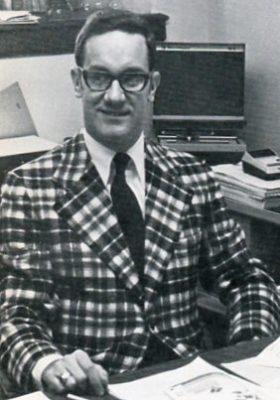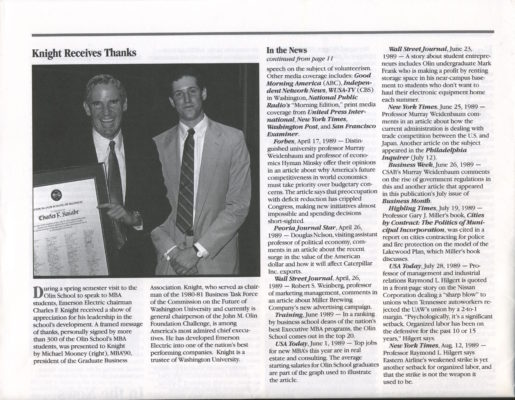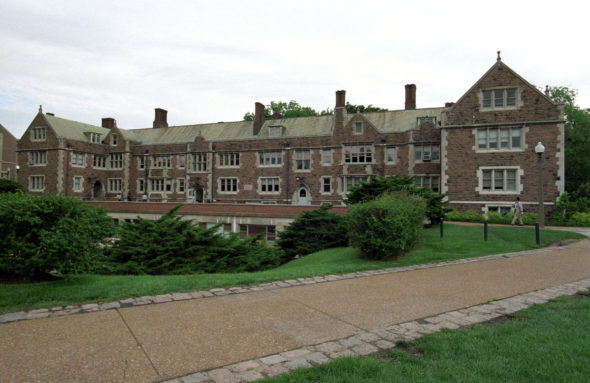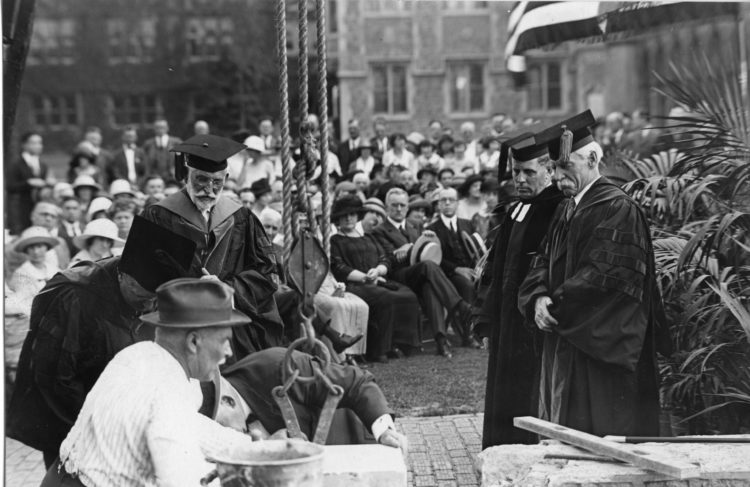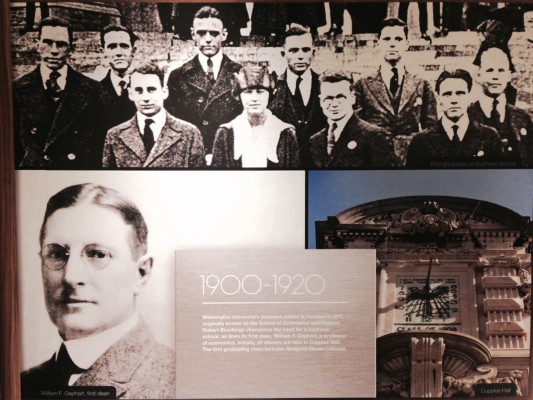By 1919, the two-year-old School of Commerce and Finance at WashU was “exceeding expectations,” according to its dean, William Gephart. He anticipated enrollment of 50 or more students that fall and was worried about them being cramped in the classrooms available in Brookings, Ridgely and Cupples Halls. Dean Gephart wanted the business school to have its very own building, as soon as possible.

Charles H. Duncker Jr.,(second row from top, second to the left), graduated with a Bachelor of Arts degree in 1914 with Phi Beta Kappa honors (the Washington University chapter of Phi Beta Kappa was chartered in 1913, which made Duncker part of the first group of students to be so honored), was a member of the track team, editor of the yearbook, and a member of the junior and senior honorary societies.
Gephart found a generous donor for the building in the family of Charles H. Duncker Jr., who had graduated from Washington University in 1914.
Charles Jr. enlisted in the army in 1917 after working for his father’s firm, Trorlicht-Duncker Carpet Co. He was commissioned as a lieutenant before deployment to France in May 1918.
Less than six months later, Charles Duncker was killed when his unit was shelled near Thiancourt, France. His promotion to the rank of captain reached his regiment 10 days after his death.
The exact amount of the gift from Mr. and Mrs. Charles Duncker Sr. and their son’s widow, Ada Nicholson Duncker, is not known, but construction of the building to honor the young officer was projected to cost “$200,000 or more.” That would translate to approximately $2.5 million in today’s dollars.

The memorial tablet on the side of Duncker Hall facing the Brookings Quad.
The corner stone for Duncker Hall was put in place by University Corporation president Robert S. Brookings and Chancellor Frederic A. Hall in 1923 (see top photo). Duncker Hall opened for classes in 1924. The business school called Duncker Hall home until the 1960s when, once again, it needed more room for a growing faculty and student body.
See more history and share your memories on the Olin Centennial website.
All photos courtesy of Washington University Archives






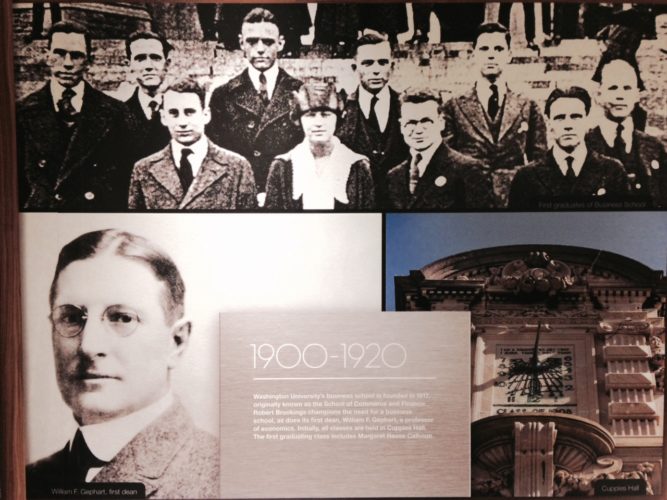
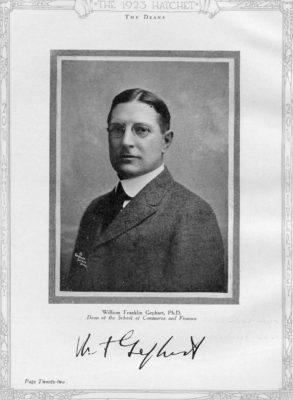 But an economics professor named William F. Gephart believed there was good reason to legitimize the study of finance and commerce, and it became his mission to open a business school at Washington University. Gephart was a native of Ohio who attended Ohio State University before he earned his PhD at Columbia University in 1909. He joined the WashU faculty in 1913 as head of the department of economics, political science, and sociology.
But an economics professor named William F. Gephart believed there was good reason to legitimize the study of finance and commerce, and it became his mission to open a business school at Washington University. Gephart was a native of Ohio who attended Ohio State University before he earned his PhD at Columbia University in 1909. He joined the WashU faculty in 1913 as head of the department of economics, political science, and sociology.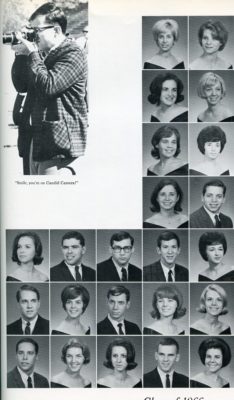 We’ll post your photos and memories on social media and here on the blog.
We’ll post your photos and memories on social media and here on the blog.